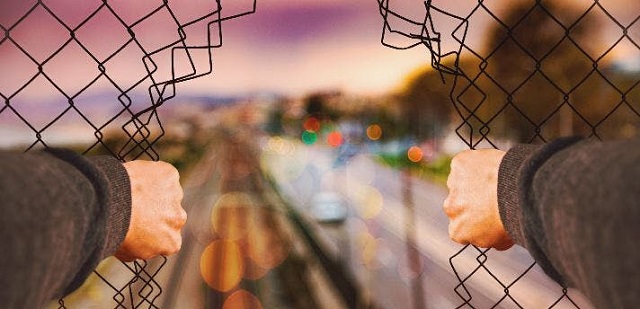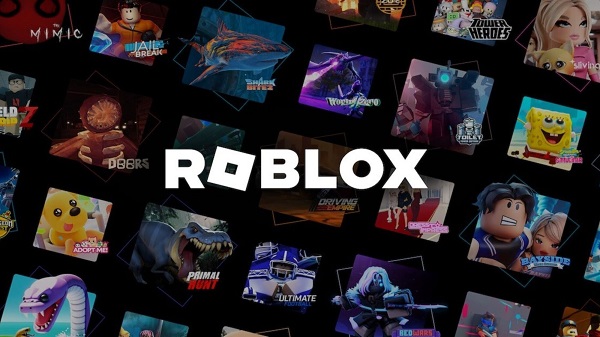Great Reset
Terrorists Welcome: Chronic counterterrorism lapses at the border demand investigation

Published April 22, 2024 by the Claremont Institute’s The American Mind
Author: Todd Bensman
The latest release into the American interior of an FBI terrorist suspect who illegally crossed the U.S.-Mexico border—a twice-freed Afghan national man free to roam America for 11 months until his capture—demands that the federal government regard this patterned problem as a chronic national security emergency requiring elevation to the highest priority within the intelligence community, federal law enforcement, and Congress.
|
|
The case of the 48-year-old Mohammad Kharwin, whom an overwhelmed Border Patrol freed into America on March 10, 2023 before agents could confirm the FBI watch list hit that initially flagged him and whom a swamped Texas immigration court freed a second time in February, is the seventh example of its kind that can establish, just from disparate public records, a mortally dangerous failure pattern.
More cases of accidental Border Patrol releases of illegally crossing terrorism suspects, who did not reach the public record, are highly likely if not certain.
But this latest miss-and-release propels the problem well beyond the critical mass threshold justifying coordinated high-priority government intervention, even if Congress must politically force it, before the next one—or those still roaming the country lost to authorities even now—needlessly kill and maim Americans.
By current public accounts, an initial Border Patrol database check flagged Kharwin for membership in Hezb-e-Islami, which the U.S. Director of National Intelligence describes as a “virulently anti-Western insurgent group,” when he illegally crossed the California border in March 2023. He was among 23,286 illegal aliens caught crossing that month in what would turn out to be a record-breaking year for the agency’s San Diego Border Sector. All told, there were 230,941 illegal crossers caught in 2023, up nearly 60,000 from 2022 and 90,000 more than 2021.
That extraordinary traffic no doubt strained all normal Border Patrol counterterrorism and vetting processes.
Instead of keeping Kharwin detained as a “special interest alien,” tagged until standard face-to-face interviews and corroboration of the initial hit was complete, Border Patrol agents under orders from Washington, D.C. waved him through like millions of other illegal crossers on “Alternatives to Detention” (ATD) personal recognizance papers, where they agree to voluntarily report later to ICE in a city of their choice.
NBC reports that Border Patrol never even informed ICE of the initial FBI watch list flagging; that’s evidently how the same collapsed border management system missed a second opportunity to catch Kharwin in late January of this year, when he showed up before an immigration judge in a Pearsall, Texas, ICE detention facility for a hearing. Perhaps because ICE still didn’t have the initial terrorism flag hit, that agency’s court lawyer representative did not report it to the judge, or appeal, when Kharwin was ordered released on $12,000 bond for a distant 2025 hearing.
“The judge placed no restrictions on his movements inside the U.S.” in the meantime, NBC reported.
Somehow, the FBI figured all of this out and got word to ICE agents to find and arrest Kharwin, which they did a month later, on February 28, in nearby San Antonio.
An Established New National Security Threat Pattern
Terrorism threat border lights have been blinking red for some time now in a non-specific way, especially since the U.S. Customs and Border Protection agency in March 2022 began publishing “Terrorist Screening Data Set Encounters” by the month on its public-facing website. Those began breaking all national records when the Biden government took office in January 2021, when apprehended illegal border crossers on the FBI watch list ballooned from three during Trump’s last fiscal year in office to 15, then by another 98 in fiscal 2022, then 169 in fiscal 2023, and another 75 so far in fiscal 2024.
Through March 2024, Border Patrol caught 342 while partnered federal agencies like the FBI and ICE intelligence presumably investigated and dealt with each. That they did so is less a good national security story than an unacceptable sampling of much bigger flows of watch-listed illegal aliens coming into America who are not caught and handled. If some two million of these so-called “got-aways” went through since 2021 (like Kharwin evidently tried to), more suspected terrorists on the FBI watch list are almost certainly among them.
But short of vastly reducing the millions-per-year border crossings by restoring former president Donald Trump’s discarded policies, the Biden Administration could at least be forced to triple down on its counterterrorism resources at the southern border.
In recent months, the terrorism threat at the border has generated some public concern, but never explicitly about the preventable accidental releases of terrorist suspects authorities later had to chase down.
In September 2023, for instance, I testified before the U.S. House Subcommittee on the Judiciary about the accidental releases I knew about at the time. Mine was indeed a rare warning that named the accidental-release problem in juxtaposition with my 2021 book America’s Covert Border War, which revealed counterterrorism programs at the border that have kept the nation safe from infiltrated attacks for nearly 20 years. I told the members that Biden’s border crisis had severely compromised those old programs, caused a spate of accidental terror suspect releases, and elevated the threat of terror attack as a result.
The Biden Administration’s own 2024 Homeland Threat Assessment warns, with far less specificity, that “terrorists may exploit the elevated flow and increasingly complex security environment to enter the United States” and that “individuals with potential terrorism connections continue to attempt to enter the Homeland illegally between ports of entry…via the southern border.”
With even less specificity, in his latest testimony to Congress about what he regards as a rising terrorist border infiltration threat, FBI Director Christopher Wray told the Senate Select Committee on Intelligence that a “wide array of very dangerous threats…emanate from” the southwest border, including the designated terror group ISIS.
Despite the variably specific warnings about the border infiltration threat, the ever-growing number of known accidental-release cases like Kharwin’s and the ones I told the subcommittee about remain broadly unrecognized as the unique emerging threat problem these cases indicate. Probably because no one has been killed yet as a consequence, few federal agencies or homeland security committee lawmakers seem interested in calling it out.
Case Candidates for Investigation
To date, only one federal investigation has produced a public report branding the problem, remarkable but forgotten or given short shrift by major U.S. news media, although I did write about it. That eye-opening document was the Department of Homeland Security’s inspector general’s office report about the April 19, 2022 crossing and mistaken release of a Colombian on the FBI watch list. ICE agents were not able to track him down to Florida for two long weeks.
Its key finding was that Border Patrol and ICE agents couldn’t do normal counterterrorism protocols because they were simply too “busy processing an increased flow of migrants.”
But these six other cases qualify as investigation-worthy:
| Read the rest here |
Alberta
Alberta bill would protect freedom of expression for doctors, nurses, other professionals

From LifeSiteNews
‘Peterson’s law,’ named for Canadian psychologist Jordan Peterson, was introduced by Alberta Premier Danielle Smith.
Alberta’s Conservative government introduced a new law that will set “clear expectations” for professional regulatory bodies to respect freedom of speech on social media and online for doctors, nurses, engineers, and other professionals.
The new law, named “Peterson’s law” after Canadian psychologist Jordan Peterson, who was canceled by his regulatory body, was introduced Thursday by Alberta Premier Danielle Smith.
“Professionals should never fear losing their license or career because of a social media post, an interview, or a personal opinion expressed on their own time,” Smith said in a press release sent to media and LifeSiteNews.
“Alberta’s government is restoring fairness and neutrality so regulators focus on competence and ethics, not policing beliefs. Every Albertan has the right to speak freely without ideological enforcement or intimidation, and this legislation makes that protection real.”
The law, known as Bill 13, the Regulated Professions Neutrality Act, will “set clear expectations for professional regulatory bodies to ensure professionals’ right to free expression is protected.”
According to the government, the new law will “Limit professional regulatory bodies from disciplining professionals for expressive off-duty conduct, except in specific circumstances such as threats of physical violence or a criminal conviction.”
It will also restrict mandatory training “unrelated to competence or ethics, such as diversity, equity, and inclusion training.”
Bill 13, once it becomes law, which is all but guaranteed as Smith’s United Conservative Party (UCP) holds a majority, will also “create principles of neutrality that prohibit professional regulatory bodies from assigning value, blame or different treatment to individuals based on personally held views or political beliefs.”
As reported by LifeSiteNews, Peterson has been embattled with the College of Psychologists of Ontario (CPO) after it mandated he undergo social media “training” to keep his license following posts he made on X, formerly Twitter, criticizing Trudeau and LGBT activists.
He recently noted how the CPO offered him a deal to “be bought,” in which the legal fees owed to them after losing his court challenge could be waived but only if he agreed to quit his job as a psychologist.
Early this year, LifeSiteNews reported that the CPO had selected Peterson’s “re-education coach” for having publicly opposed the LGBT agenda.
The Alberta government directly referenced Peterson’s (who is from Alberta originally) plight with the CPO, noting “the disciplinary proceedings against Dr. Jordan Peterson by the College of Psychologists of Ontario, demonstrate how regulatory bodies can extend their reach into personal expression rather than professional competence.”
“Similar cases involving nurses, engineers and other professionals revealed a growing pattern: individuals facing investigations, penalties or compulsory ideological training for off-duty expressive conduct. These incidents became a catalyst, confirming the need for clear legislative boundaries that protect free expression while preserving professional standards.”
Alberta Minister of Justice and Attorney General Mickey Amery said regarding Bill 13 that the new law makes that protection of professionals “real and holds professional regulatory bodies to a clear standard.”
Last year, Peterson formally announced his departure from Canada in favor of moving to the United States, saying his birth nation has become a “totalitarian hell hole.”
Digital ID
Roblox to Mandate Facial and ID Verification

The platform’s age checks are part of a bigger push to create online spaces policed by biometrics.
|
The rollout begins this week as an optional process and will become compulsory in December in countries including Australia, the Netherlands, and New Zealand, reaching the United States and other regions by early 2026.
The company says these steps are meant to make its vast online world safer for younger audiences, restricting how players of different ages can interact inside user-created “Experiences.”
To take part in chat features, users must now verify their age either by scanning a government-issued ID or recording a short facial video through Persona, an outside verification company.
|
 |
|
Conversations are limited to others in the same or adjacent age groups unless users connect through “Trusted Connections,” which verifies they have a real-world relationship.
Roblox says the goal is to limit unsafe interactions and hopes the model will become “a new industry standard.”
While promoted as a safety improvement, this model also signals a move toward identity-linked participation in online spaces.
Digital ID verification effectively removes the anonymity that has long been part of internet culture.
It ties access to personal credentials, leaving fewer opportunities for users to interact without surrendering identifiable data.
The same technologies now appearing on entertainment platforms are increasingly being discussed by US policymakers as potential requirements for accessing social media, adult content, or even general-purpose platforms.
Several US states have already passed or proposed laws mandating age verification or digital ID checks for online activity, a trend that privacy advocates warn could erode personal freedom and create databases of sensitive personal information.
According to Roblox, “information uploaded to Persona is retained for a period of 30 days” before deletion.
Persona’s privacy policy indicates that it may collect extensive information, including device identifiers, geolocation data, and records from brokers and public sources.
This wide net of data collection extends well beyond what is required to confirm age, deepening concerns about how biometric and ID data could be reused or shared.
The company has not specified exact rollout dates for all markets but expects global enforcement to be completed within a year.
This makes Roblox the first major online platform to require facial age checks for chat participation.
The move comes as Roblox faces ongoing lawsuits and public pressure related to reports of grooming and child exploitation on the platform.
On the same day the company revealed its latest update, advocacy groups UltraViolet and ParentsTogether Action hosted an online protest, submitting a petition signed by 10,000 parents and grandparents calling for stronger child safety rules.
Roblox also introduced a new Safety Center, described as “a dedicated resource for parents and caregivers that provides clear guidance and tools to help them make informed decisions, set up Parental Controls, and support their child’s online experience.”
Still, the underlying trade-off remains significant. Roblox’s “Facial Media Capture Privacy Notice” confirms that it may conduct “other facial media processing” for “safety, assurance, or feature-specific purposes,” though the company says “Roblox does not use such facial media to identify you personally.”
Yet by normalizing ID scans and biometric checks, the company moves closer to a model of online life where anonymity is the exception rather than the rule, a change that could permanently alter how people experience privacy in digital environments.
|
-

 Carbon Tax17 hours ago
Carbon Tax17 hours agoCarney fails to undo Trudeau’s devastating energy policies
-

 Business13 hours ago
Business13 hours agoBudget 2025: Ottawa Fakes a Pivot and Still Spends Like Trudeau
-

 COVID-192 days ago
COVID-192 days agoFreedom Convoy protestor Evan Blackman convicted at retrial even after original trial judge deemed him a “peacemaker”
-

 Alberta2 days ago
Alberta2 days agoAlberta bill would protect freedom of expression for doctors, nurses, other professionals
-

 Health13 hours ago
Health13 hours agoTens of thousands are dying on waiting lists following decades of media reluctance to debate healthcare
-

 Daily Caller2 days ago
Daily Caller2 days agoTrump Gives Zelenskyy Until Thanksgiving To Agree On Peace Deal, With U.S. Weapons And Intel On The Line
-

 Business1 day ago
Business1 day agoI Was Hired To Root Out Bias At NIH. The Nation’s Health Research Agency Is Still Sick
-

 Business1 day ago
Business1 day agoLarge-scale energy investments remain a pipe dream









